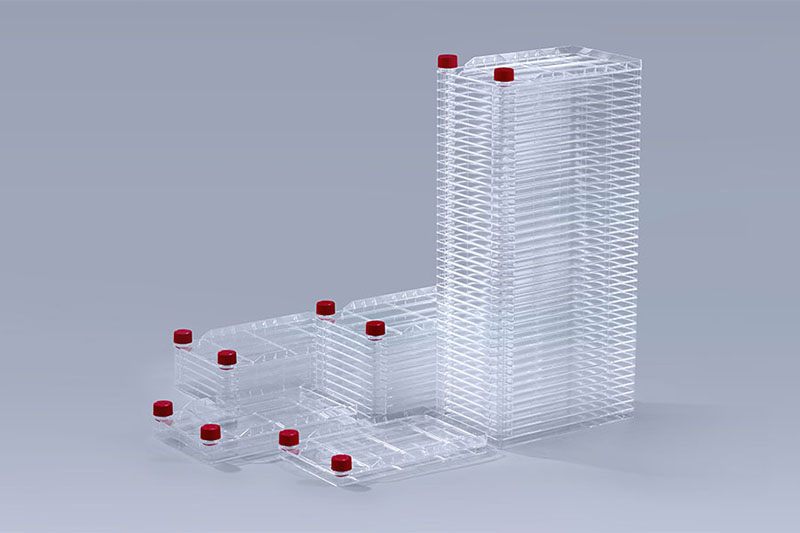Adherent cells are relatively common cell types. The growth of this type of cells must have a support surface that can be attached, and the cells can grow and reproduce on the surface by relying on the attachment factors secreted by themselves or provided in the medium. Commonly used cell culture consumables for culturing adherent cells include cell factory systems, cell culture roller bottles, and cell culture flasks.
Cell factory systems: Cell culture consumables commonly used in large-scale culture, consisting of one or more layers of structure, common ones are 1 layer, 2 layers, 5 layers, 10 layers, 40 layers, etc., and the layers are connected by ultrasonic welding process , the strength of its junction is close to that of a whole piece of continuous material, which can achieve good sealing.
Cell culture roller bottles: a high-quality consumable that can meet the requirements for large-scale production of cells and tissues in both experiments and industrial production. With the help of cell culture spinner bottle system, it is widely used in cell biology, virology, microbiology and The pharmaceutical industry and other fields can also be used for suspension cell culture.
Cell culture flasks: It plays an important role in medium-scale cell and tissue culture in the laboratory. It adopts a torticollar design to facilitate the introduction and export of culture medium. The bottleneck is relatively wide and has no dead space, making it easy for pipettes and cell scrapers to contact the growth surface.
The above are several cell culture consumables commonly used for adherent cells. It should be noted that the surface of these consumables needs to be treated with surface TC to better adapt to the growth of adherent cells.
The FAI climbed 5.9 percent year-on-year in the first 11 months of 2018, quickening from the 5.7-percent growth in Jan-Oct, the National Bureau of Statistics (NBS) said Friday in an online statement.
The key indicator of investment, dubbed a major growth driver, hit the bottom in August and has since started to rebound steadily.
In the face of emerging economic challenges home and abroad, China has stepped up efforts to stabilize investment, in particular rolling out measures to motivate private investors and channel funds into infrastructure.
Friday's data showed private investment, accounting for more than 60 percent of the total FAI, expanded by a brisk 8.7 percent.
NBS spokesperson Mao Shengyong said funds into weak economic links registered rapid increases as investment in environmental protection and agriculture jumped 42 percent and 12.5 percent respectively, much faster than the average.
In breakdown, investment in high-tech and equipment manufacturing remained vigorous with 16.1-percent and 11.6-percent increases respectively in the first 11 months. Infrastructure investment gained 3.7 percent, staying flat. Investment in property development rose 9.7 percent, also unchanged.
 English
English



















































 Cell Factory Systems
Cell Factory Systems Cell Culture Roller Bottles
Cell Culture Roller Bottles